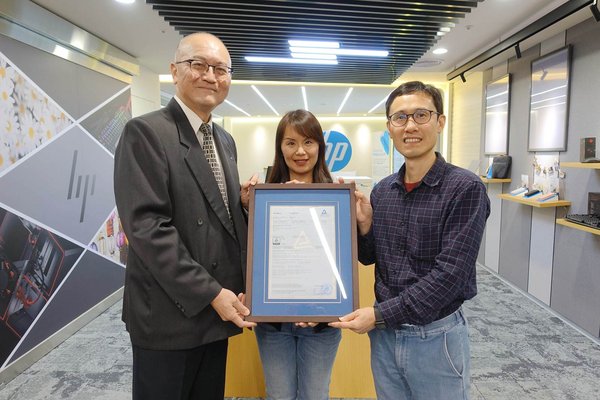
TUV Rheinland's hardware low blue light certification overcomes the traditional problem of poor display quality and yellow-tinged displays from the reduction of all-blue light. The hardware low blue light certification reduces the most harmful blue light spectrum while allowing harmless blue light to remain. Display devices can therefore achieve high color quality while meeting the requirements for low blue light emissions. We can now say bye-bye to low blue-light displays with a yellow tint.
The first notebook in the world with an AMOLED display, from HP, is also the first to feature low blue light hardware. The low blue light design was tested by TUV Rheinland, and found to reduce the proportion of harmful blue light from 55.9% to 30.5%. Eye comfort for users who must work for extended periods of time on a notebook is therefore enhanced. Other product features, such as 133% sRGB color space, exceptional color contrast, and choice of 4 user modes (notebook/tent/vertical/tablet), make it suitable for creativity, presentation, and portable viewing.
Anti-blue light coating or software calibration has been used with some products to filter out harmful blue light, but the results have been uneven. In some instances the blue light controls have been too strong, resulting in poor brightness or color bias that negatively impacts normal display use. Low blue light certification indicates that optimal technical balance between display performance and user health has been achieved with a product and that safety requirements have been met as well, making this a guarantee of quality.
Screen flicker or blue light may not be easy to detect in 3C products. Human eyesight is nevertheless still affected, resulting in eye fatigue, headaches, and physical tiredness. TUV Rheinland has been developing display-safety evaluation targeted at different requirements since 2014. Its global technology center now offers custom monitor-safety testing methods for blue light, flicker, reflections, and glare. Buyers and suppliers can now both use the TUV Rheinland Certipedia ( www.certipedia.com/?locale=en) to see which certifications have been obtained for models of interest.
TUV Rheinland is the current leader in the number of display certifications issued. We operate the highest number of TCO-approved ergonomic labs in the world, and our labs are recognized by the US EPA. New innovations in testing technology are constantly being developed in response to technological progress and differentiation in display products. Consumer health is crucial to TUV Rheinland. The proliferation of touch-control products means TUV Rheinland is now looking at incorporating touch-display applications into its proprietary 2Pfg display standard. Tighter requirements on reflections will provide consumers with a more relaxing viewing experience and better eye care.
Photo - https://photos.prnasia.com/prnh/20190417/2439023-1
SOURCE TUV Rheinland Taiwan Ltd.
| Contact: |
| Company Name: TUV Rheinland Taiwan Ltd.
Sally Chang Phone: +886-2-21721169 |
